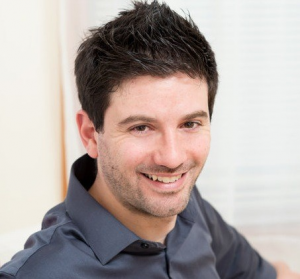Wednesday, February 6, 2019
12:00pm-1:00pm
44 St. George Street, Room 2001
44 St. George Street
Enter via the Office of the Dean, 44 St. George Street.
Even though Fourier’s law was conceived almost two centuries ago, it is still valid in most scenarios. However, advances in fabricating nanostructured devices and thermal conductivity measurements have revealed that thermal diffusion theories fail at the nanoscales. In fact, when the characteristic length of a material becomes comparable with the mean-free-path (MFP) of phonons, i.e. quantized lattice vibrations, a significant fraction of heat becomes ballistic. Nondiffusive models based on the Boltzmann transport equation (BTE) have shown remarkable agreement with experiments on simple geometries (i.e. thin films). However, the inherent difficulties in handling both momentum and real space across several length scales have hindered the development of solvers of heat transport in complex geometries.
In this talk, Giuseppe Romano will describe his recently developed method, based on “MFP interpolation,” which solves the BTE deterministically (finite-volumes) in arbitrary three-dimensional structures. The second part of the talk will focus on the application of the BTE to nanostructured thermoelectric materials (TEMs). These systems can convert heat directly into electricity and have several applications, including waste-heat recovery and refrigeration. However, TEMs require good electrical properties and low thermal conductivities, a condition that is achieved by nanostructures. Dr. Romano will report his recent effort in minimizing thermal transport in nanoporous Si via shape optimization. The talk will conclude with a discussion about recent efforts in inverse design based on machine learning.
 Dr. Romano is a Research Scientist in the Department of Mechanical Engineering at Massachusetts Institute of Technology. His current research focuses on nanoscale heat transport in nanostructured materials, with application to thermal energy conversion. He recently released OpenBTE, an open-source code for solving nondiffusive heat transport in complex geometries. Over the summer of 2018, he was a visiting scientist at NASA Jet Propulsion Lab. Dr. Romano joined MIT in 2010 as a postdoctoral fellow. He received his PhD at University of Rome Tor Vergata, where he developed electro-thermal models of self-heating effects. While a PhD student, he co-founded TiberLAB, a start-up commercializing software for multiscale modeling of devices.
Dr. Romano is a Research Scientist in the Department of Mechanical Engineering at Massachusetts Institute of Technology. His current research focuses on nanoscale heat transport in nanostructured materials, with application to thermal energy conversion. He recently released OpenBTE, an open-source code for solving nondiffusive heat transport in complex geometries. Over the summer of 2018, he was a visiting scientist at NASA Jet Propulsion Lab. Dr. Romano joined MIT in 2010 as a postdoctoral fellow. He received his PhD at University of Rome Tor Vergata, where he developed electro-thermal models of self-heating effects. While a PhD student, he co-founded TiberLAB, a start-up commercializing software for multiscale modeling of devices.